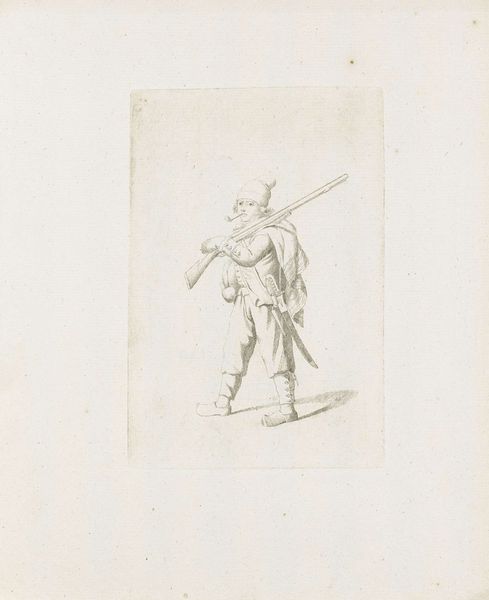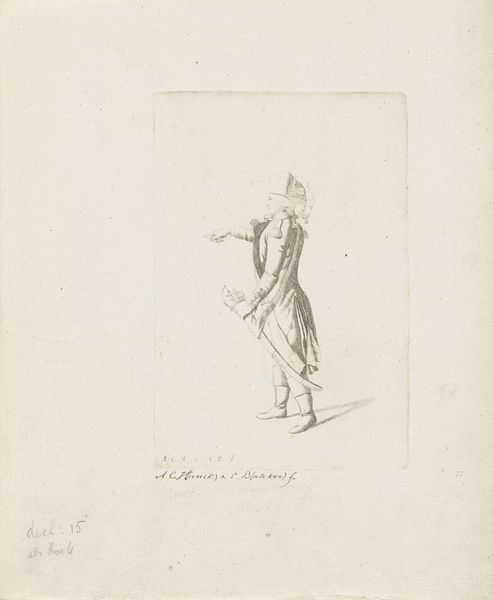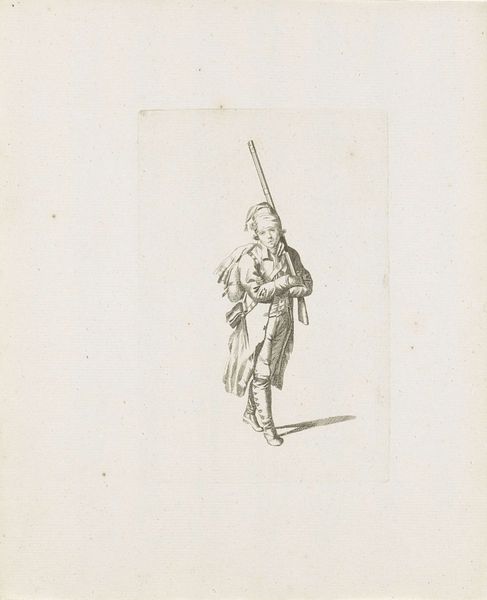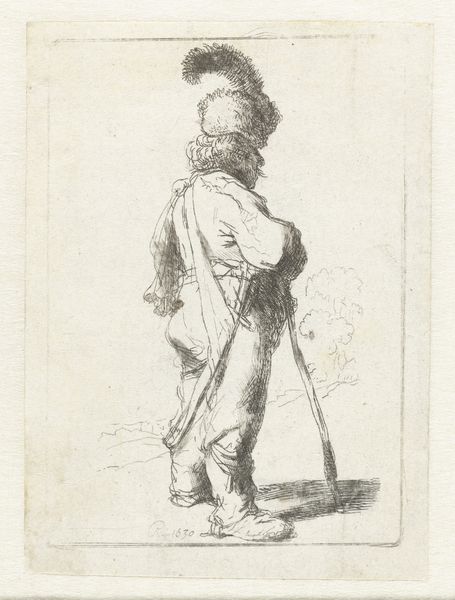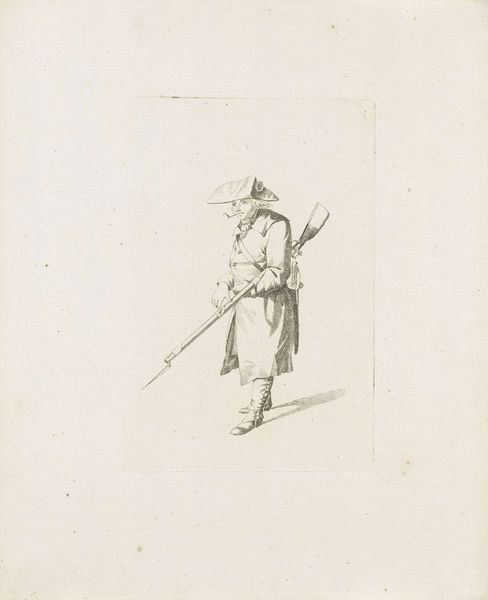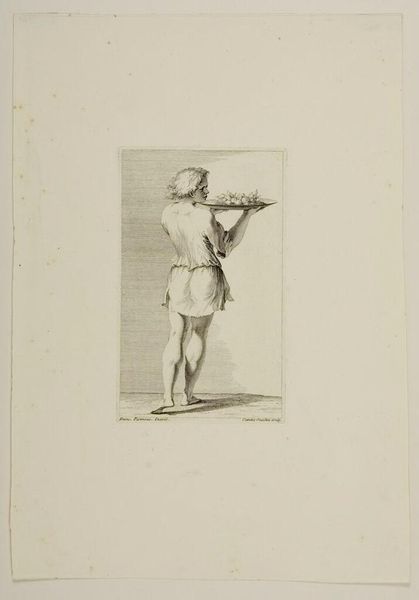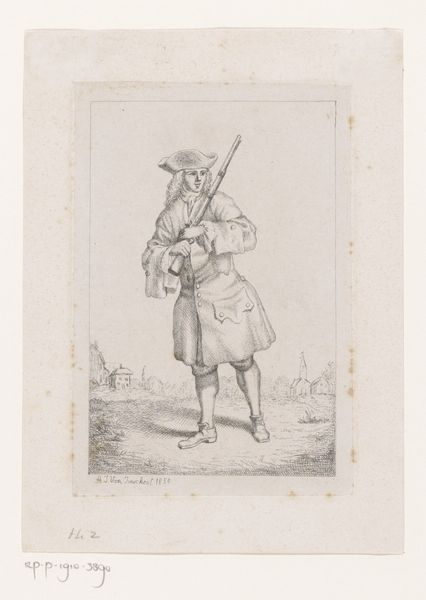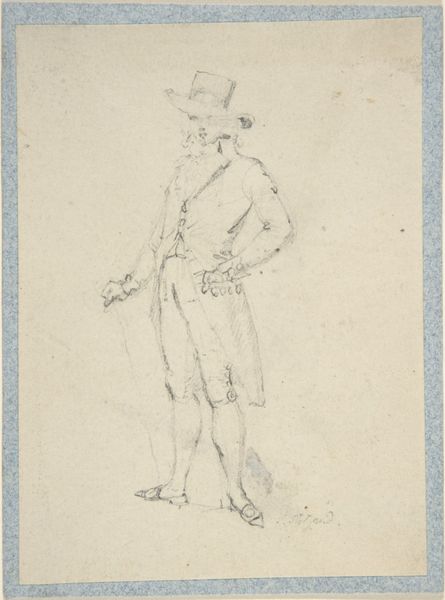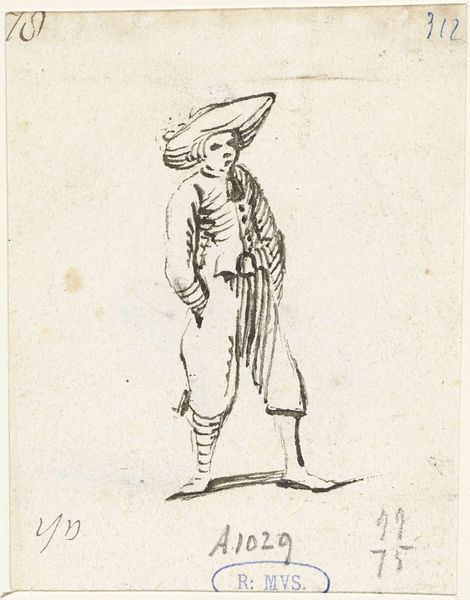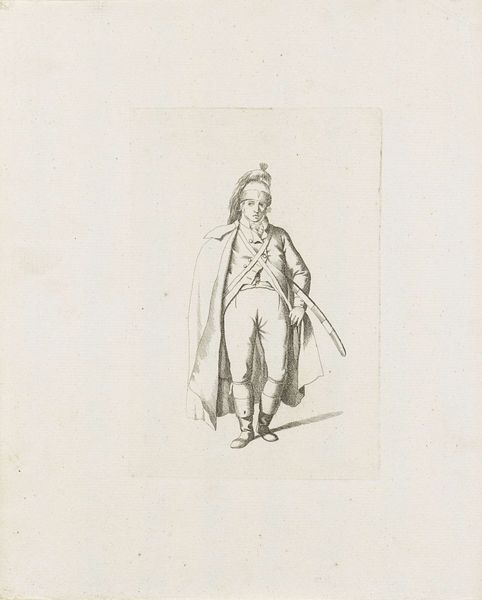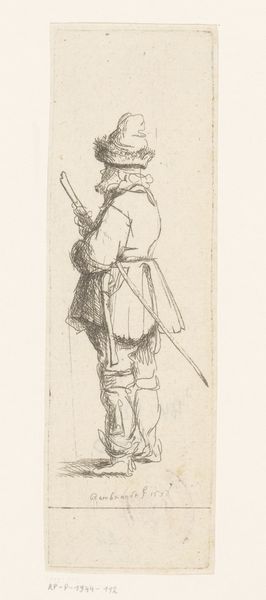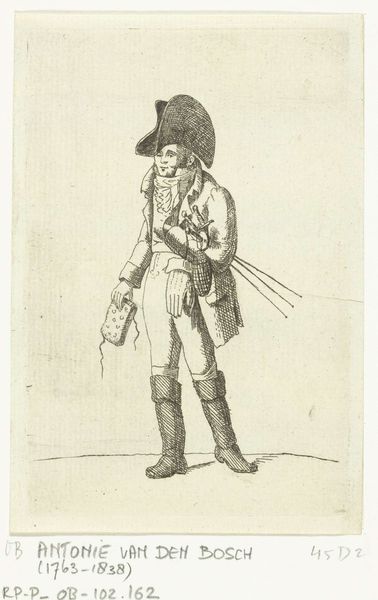
drawing, pencil
#
portrait
#
drawing
#
pencil sketch
#
figuration
#
pencil
#
costume
#
line
#
history-painting
#
realism
Dimensions: height 155 mm, width 105 mm
Copyright: Rijks Museum: Open Domain
Editor: Here we have "Standing French Soldier," a pencil drawing from 1795 by August Christian Hauck, housed here at the Rijksmuseum. I'm immediately drawn to its delicate lines; it's so sparse, almost ghostly. What strikes you about the composition, the lines and forms used in this drawing? Curator: The essence of this work lies in its masterful use of line. Note how Hauck delineates form not with bold strokes or chiaroscuro, but with subtle variations in pressure. The figure exists almost ethereally. Observe, for instance, the almost casual suggestion of the soldier’s features; they are indicated, not described. Consider the negative space; it's not merely background, but an active element in defining the figure. Editor: I see what you mean. It’s more about suggestion than explicit detail. It almost feels unfinished, but in a way that contributes to its realism. Do you think the looseness helps capture movement? Curator: Precisely! And consider the use of realism in this historical context. Hauck presents the soldier with a detached sense. There’s a notable absence of idealization or heroic posing, as we might expect in grand history painting. What does this conscious decision to depict the soldier so plainly, so…undramatically, convey to you? Editor: I suppose it invites a different kind of consideration, more about the reality of being a soldier, perhaps? I wouldn’t have picked up on that without thinking about the composition and the specific lines first, though. Thanks for pointing that out. Curator: Indeed. Close visual attention, as you've just demonstrated, reveals much. It is a work that offers greater insight through careful analysis of its intrinsic components, its structure.
Comments
No comments
Be the first to comment and join the conversation on the ultimate creative platform.

